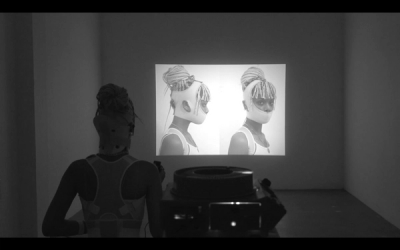How Can Nonprofits Better Serve Artists? With a New $1.5 Million Program, Eyebeam Is Turning Over the Purse Strings to Its Fellows

The nonprofit recently gave up its brick-and-mortar space to embrace a more democratic and digital approach.
Many non-profits in the creative sector preach the importance of listening and responding to artists, but over the last year and a half, few have done it in action quite like the art and technology outfit Eyebeam, which has virtually reinvented itself—literally—in the name of aiding artists in a pandemic-shaped landscape.
Last year, Eyebeam, an organization with fewer than 10 employees, gave out $260,000 in grants to 27 artists working on “new ways of interacting through the internet.” Then, in February , it announced that it would give up its brick-and-mortar space in New York, transforming its flagship residency program into an online series of “fractal fellowships,” which the participants themselves would control.
The idea is to “rethink what institutional relationships with artists can be,” Eyebeam’s executive director, Roderick Schrock, told Artnet News.
Today, that program takes effect. The new artist-run, socially conscious fellowship, called “Democracy Machine,” will see the humble non-profit meting out $1.5 million in grant money to 75 artists over the next three years.
As the program’s name suggests, the principle of democracy is baked into both the structure of the program and its mission statement. “What are the ideals we should be striving for within democracy and how do we elevate the needs of the many when digital tools are invented by the few?” Schrock has asked the incoming fellows.
Eybeam’s inaugural cohort of “Democracy Machine” fellows [clockwise from top left]: DeLesslin George-Warren, Marton Robinson, Panteha Abareshi, Sebastián Calfuqueo, and Neta Bomani. Portraits courtesy of Eyebeam.
The fellows will be grouped into three cohorts, one per year, with each group more than double the size of the one that preceded it. The first comprises just five participants, all of whom identify as Black, disabled, or Indigenous: Panteha Abareshi, Neta Bomani, Sebastián Calfuqueo, Marton Robinson, and DeLesslin “Roo” George-Warren.
Each will be awarded $20,000 and have access to various professional development opportunities. A new digital platform called “Open. Eyebeam.” will roll out early next year to host artists’ work and other programming efforts.
Near the end of their eight-month fellowship, the first group of artists will select the next cohort, who in turn will choose the cohort after that. Eyebeam’s role in the program will be rather limited; the organization will distribute the funds but will ultimately have little-to-no say in how they’re used or who uses them.
“Artists know where the resources should go,” he said, adding that the decision to restructure the fellowship program in this way came from months of conversations with creatives in the Eyebeam orbit—residency alumni, board members, and friends including writer and curator Legacy Russell and artist Jerron Herman.
Thanks to recent grants from the Ford Foundation and the Andrew W. Mellon Foundation ($500,000 and $600,00, respectively), the 23-year-old non-profit is working with an amount of money it has never had before. With more money, of course, comes more opportunity, Schrock said, and who better than artists to rethink something as complicated as digital democracy in the era of techno-capitalism?
“They’re able to wedge loose practices that speak most relevantly and most responsibly to this moment,” he said. “There’s a real space for creativity at this time that’s afforded through digital technologies around group decision making and self-governance.